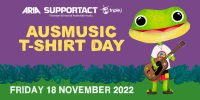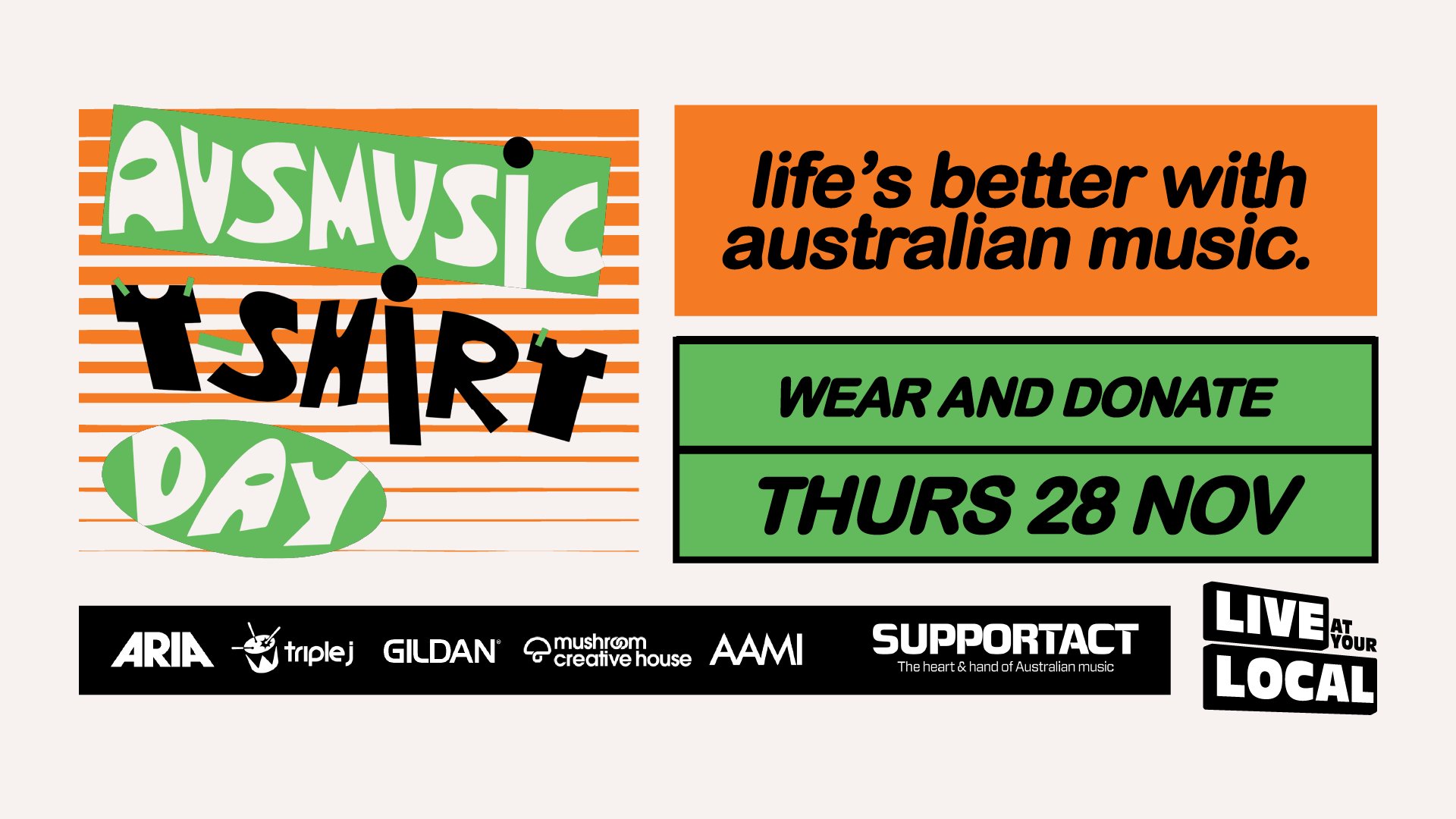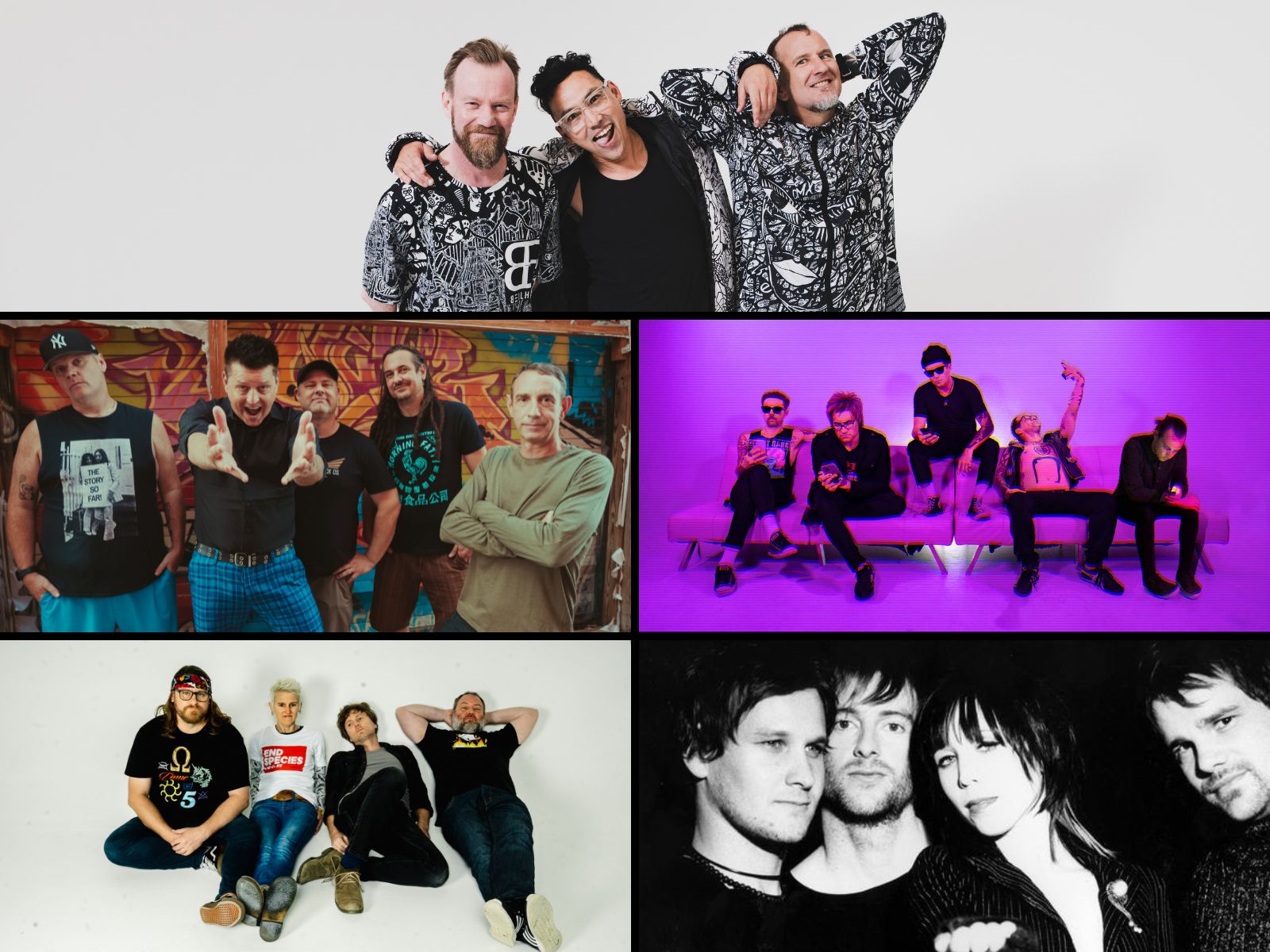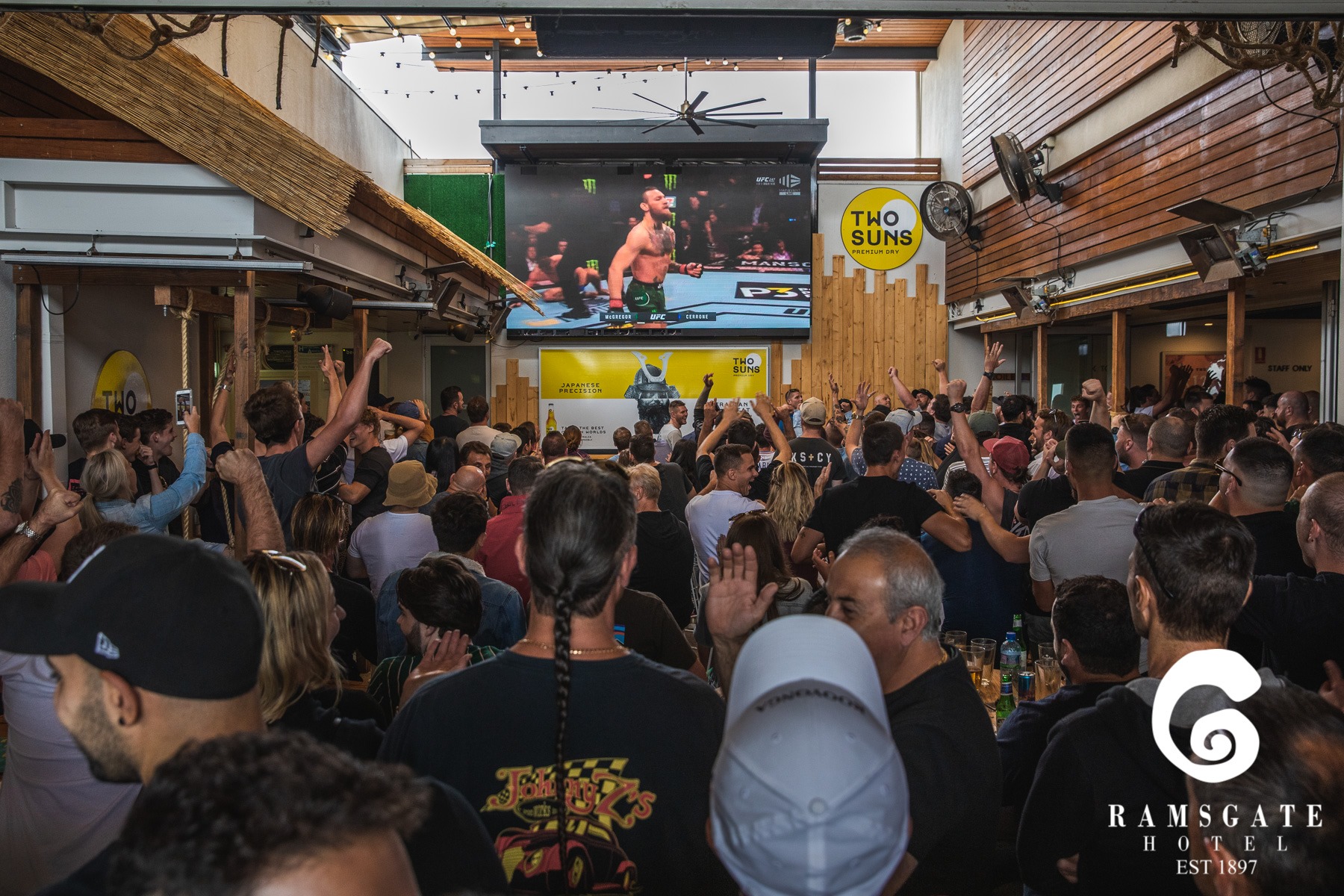
If anyone knows what makes an Aussie band T-shirt great, it’s gonna be Brian “BT” Taranto, founder/Managing Director of Love Police, which started off as a merch company, later expanding to also incorporate record label, touring and book publishing arms. So BT is basically The Big Kahuna of merch and personally owns enough band T-shirts to fill several galleries.
Ahead of Ausmusic T-Shirt Day, we ask BT whether there’s a Holy Grail of band T-shirts and which shirts, from his whopping personal collection, he’d rush to save from a house fire.
How many band T-shirts do you own in total and how many of these are of Aussie bands?
About 6,000 in total, in my personal collection; I probably have the most shirts in the country, I think. So probably about half of those, a few thousand, are Australian. And I also have the biggest Neil Young T-shirt collection on the planet. I wear band T-shirts all the time, so they’re always around.
I mean, for a long time there I used to keep one of every shirt that Love Police did and, yeah, it’s a lot of shirts! I kind of don’t now but, yeah! I keep amassing them.
How do you store all these T-shirts? Are they filed in alphabetical order?
Yes, they are. They’re stored in international and Australian and festival and, you know, there’s certain bands that I have a lot of – like, Cold Chisel or You Am I or Midnight Oil or Neil Young or Black Keys and stuff like that – which I’ll store separately. But, yeah, there’s some kind of method to the madness.
What was the first-ever band T-shirt you bought?
The first band T-shirt I ever bought would’ve been – let me think of my first one: it would’ve been Cold Chisel’s Last Stand concert, unless the Stop The Drop concert was before it. I’d say a Goanna T-shirt is actually the first one I would’ve bought, in 1982. It was the album cover on the T-shirt [Spirit Of Place: plane flying over Ayers Rock, designed by Judi Kenneally]. I don’t still have it, but I do work with the band Goanna now.
I mean, my thing is I started in the outer suburbs of Melbourne and just loved music – didn’t know what the music industry was – and Cold Chisel and Midnight Oil and Goanna were my heroes. And now they’re all my friends and I work with them. So that’s kinda my world.
What are couple of your all-time favourite Aussie band T-shirts?
There’d certainly be some that I had a hand in producing or designing. Favourite Australian – well, the most recent shirt was the King Stingray black tour T-shirt, which, I guess they designed that, but we produced it – that’s a bit of a current fave. Um, what else is there? There’s certainly You Am I shirts that we’ve designed that I really love. I’m trying to think of one in particular, but the You Am I shirts are always a lotta fun to design.
Do you own any band T-shirts that you consider too precious to wear?
I bought this vintage Grateful Dead T-shirt in New York – I dunno, maybe 15 years ago – that was pristine from, like, 1973. And at the time I think it was $60 US or something, which was a lot of money for vintage shirts back then. But I actually bought it and I decided, ‘This is like a gallery piece, but I’m just gonna wear it,’ and I’ve worn it, I dunno, ten times a year since then. So… what? I’ve worn it 150 times, so I’ve certainly got my wear out of that shirt. And I think the trick is you should always wear them, ‘cause if you don’t wear them, when do you get to see them? [Laughs] Unless you’re a crazy collector and don’t have many…
What makes a great band T-shirt?
The printing is important and so long as the printing is of a good enough quality, and isn’t too heavy – well, that helps. But overall, so long as the design either speaks to you about what the band is, or speaks to you in a good fashion way, or a humorous way or something like that.
What do you reckon about band merch that’s sold in chain stores?
I’m not overly excited, but generally speaking when product is sold at those places it’s sold at a cheaper price and I feel that that cheapens the brand a little. But, you know, the King Stingray [T-shirts] at Cotton On – I thought that was done quite well. The Rolling Stones hoodies at Kmart for $12? I don’t think are done so well.
But, yeah, I don’t mind that stuff and, you know, it’s the band’s decision – it’s all officially licensed product. It’s their imagery; if they wanna do that sorta stuff, it’s fine. I do get scared that that might interfere with their tour sales, but as of yet it just hasn’t. So it’s probably two different markets, in a way.
What percentage of merch profits goes to the artist?
I can’t give you exact figures, but it is absolutely truthful to tell you that the lion’s share of merchandising profits go to the artists – always have, always will – in a much more favourable split than recording; I mean, it’s in line with touring, basically. Whereas the case in retail – like the Cotton Ons and whatnot – is that the royalty paid to the band in relation to the selling price of an item is minimal. And it’s not saying the companies are ripping off the fans, it’s just a different model to the whole live and online thing.
Is there a Holy Grail of band T-shirts?
Oh, look, you can sniff around online on eBay and whatnot and find some really expensive shirts. I mean, I’ve got a couple that are probably $1,000 shirts to the right person.
I was into buying a lot of those old retro shirts years ago. So you used to be able to snap up a Rolling Stones 1981 US tour shirt for $10. Well, they go for $500 now. But, you know, I was ahead of the game.
So I’d say all the shirts I want, I have. I guess the one shirt that I wish I’d got – I didn’t get the Nirvana tour shirt when they toured here, I was at the Melbourne show, but I did get the cap! I’ve still got the cap.
Ausmusic T–shirt Day is on Friday 18 November 2022
Learn more about how to support the #AusmusicTShirtDay fundraising initiative here.
About Support Act
Support Act is the music industry’s charity, delivering crisis relief services to musicians, managers, crew and music workers across all genres who are unable to work due to ill health, injury, a mental health problem or some other crisis, such as COVID-19. They also develop and implement life-saving mental health and wellbeing programs and services, as well as dedicated First Nations programming.


